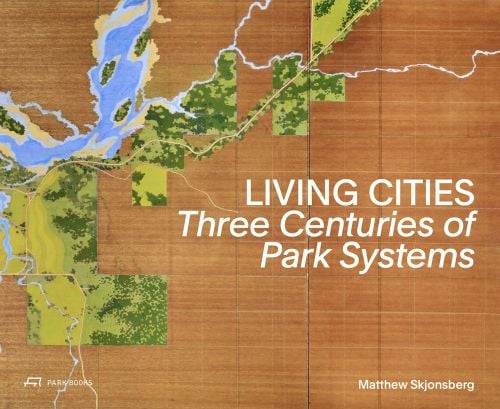
Living Cities
Three Centuries of Park Systems
- First book in more than a century on the topic of park systems and civic design, the practice of urban and landscape planning explicitly oriented towards the common good
- A chronological survey of civic design, featuring 30 park systems on five continents from three centuries
- A re-evaluation of civic design as an intergenerational practice of urban planning in the light of current initiatives
- Park systems are highly topical against the backdrop of climate change and the associated ecological and economic challenges
The creation of park systems is a historically proven method for communities to stabilise and cultivate healthy ecological habitats in country dwellings as well as in dense urban areas. Park systems ensure clean soil, water, and air for all. Moreover, they offer inter-generational and inclusive recreational opportunities along ecological corridors. Between 1900 and 1950, civic design — a practice in urban and landscape planning explicitly oriented towards the common good — experienced a heyday. Park systems were successfully used as “green armatures” hosting public facilities such as playgrounds, schools, administrative buildings, hospitals, and gardens.
Living Cities offers a chronological survey of civic design based on more than 30 park systems on five continents. The examples range from Johann Wolfgang von Goethe’s Park an der Ilm in Weimar (1778) and John Nash’s Regent Street in London (1806) to Chicago’s park system (1850), Albert Bodmer and Maurice Braillard’s plans for Geneva (1936), and Frank Lloyd Wright’s Taliesin Valley (1947), as well as to contemporary and future projects in Addis Ababa, Madrid, Medellín, New York, and Seoul. Matthew Skjonsberg’s book demonstrates the ecological and social impact of park systems and highlights the diverse challenges that communities face when implementing such projects. At the same time, it encourages a re-evaluation of civic design as an inter-generational practice of urban design.
- Publisher
- Park Books
- ISBN
- 9783038603634
- Publish date
- 11th Aug 2025
- Binding
- Hardback
- Territory
- World excluding Austria, Germany, Switzerland, Puerto Rico, United States, Canada, and Japan
- Size
- 245 mm x 300 mm
- Pages
- 304 Pages
- Illustrations
- 186 color, 114 b&w
Distributed by ACC Art Books
Our Catalogues
Please log-in or create an account to see your recent items.